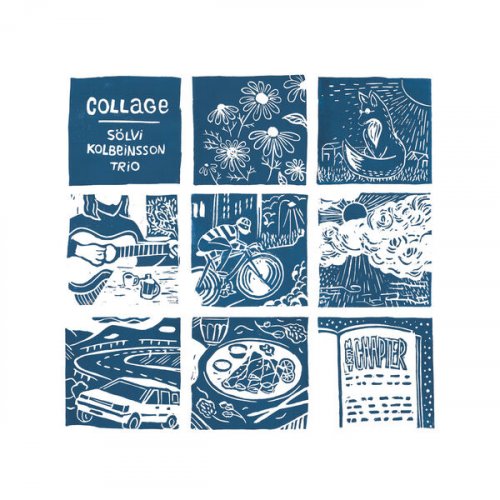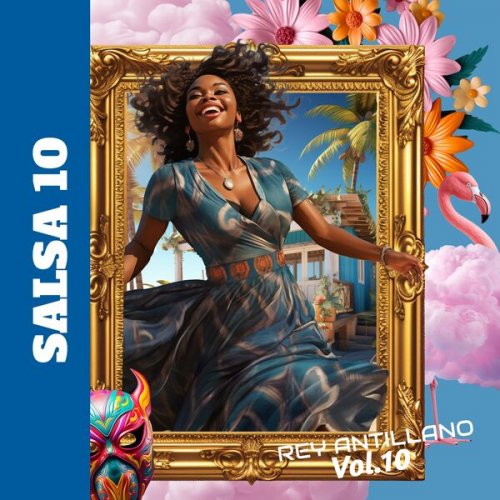Jonathan Dimmock - Organ Music of Christopher J. Hoh (2024)

Artist: Jonathan Dimmock
Title: Organ Music of Christopher J. Hoh
Year Of Release: 2024
Label: Raven
Genre: Classical
Quality: FLAC (tracks)
Total Time: 1:06:04
Total Size: 279 MB
WebSite: Album Preview
Tracklist:Title: Organ Music of Christopher J. Hoh
Year Of Release: 2024
Label: Raven
Genre: Classical
Quality: FLAC (tracks)
Total Time: 1:06:04
Total Size: 279 MB
WebSite: Album Preview
1. Jonathan Dimmock – Chorale Prelude on "Crucifer" (02:39)
2. Jonathan Dimmock – Chorale Prelude on "Kirken den er" (03:44)
3. Jonathan Dimmock – Assorted Airs for Organ, Vol. 1: I. Allemande (03:55)
4. Jonathan Dimmock – Assorted Airs for Organ, Vol. 1: II. Fantasia (02:29)
5. Jonathan Dimmock – Assorted Airs for Organ, Vol. 1: III. Sarabande (04:47)
6. Jonathan Dimmock – Assorted Airs for Organ, Vol. 1: IV. Allegretto (03:42)
7. Jonathan Dimmock – Chorale Prelude on "Veni Emmanuel" (03:30)
8. Jonathan Dimmock – Chorale Prelude on "Christ ist erstanden" (03:41)
9. Jonathan Dimmock – Assorted Airs for Organ, Vol. 1: V. Passacaglia (04:37)
10. Jonathan Dimmock – Assorted Airs for Organ, Vol. 1: VI. Air (03:27)
11. Jonathan Dimmock – Assorted Airs for Organ, Vol. 1: VII. Meditation (02:32)
12. Jonathan Dimmock – Assorted Airs for Organ, Vol. 1: VIII. Gigue (02:13)
13. Jonathan Dimmock – Chorale Prelude on "St. Anne" (03:06)
14. Jonathan Dimmock – Chorale Prelude on Herzliebster Jesu (03:53)
15. Jonathan Dimmock – Assorted Airs for Organ, Vol. 1: IX. Elegy (02:54)
16. Jonathan Dimmock – Assorted Airs for Organ, Vol. 1: X. Fughetta (03:25)
17. Jonathan Dimmock – Assorted Airs for Organ, Vol. 1: XI. Pastorale (04:04)
18. Jonathan Dimmock – Assorted Airs for Organ, Vol. 1: XII. March (03:27)
19. Jonathan Dimmock – Voluntary on "Truro" (03:51)
This album presents Assorted Airs for Organ Vol. 1 along with seven chorale preludes on various hymn tunes. The triumphant Crucifer receives a vigorous, quasi fantasia treatment ending with a strong trumpet solo. Kirken den er offers contrast in a meditative setting featuring a gentle countermelody.
The next pair of chorale preludes comes from a collection based on chant-inspired hymns (published by Lorenz in 2024 as Thee We Adore). Veni Emmanuel opens with the “rejoice” refrain of the advent song before presenting the well-known hymn juxtaposed with the original Gregorian chant. Later, strong phrases in the Pedal are followed by rapid high passages that descend — humankind’s plea for the Messiah answered by heaven above. The organ opens up at “rejoice” again and moves to a majestic, expectant end.
Christ ist erstanden arose in the 1500s from an 11th-century Easter sequence. Tonally ambiguous, this setting begins in quiet mystery, with high organ notes like dawn breaking. Next comes a low countermelody against the slow cantus firmus above. At “Alleluia,” the music turns quick and joyful, like the women running to share the good news. Throughout, syncopation and harmony allude to the melody’s medieval origins.
The chorale prelude on St. Anne, “O God Our Help In Ages Past,” takes up one of the best-known hymns ever, which many composers have set. Here, modern harmony conveys something more “stormy blast” while remaining strong and uplifting. Herzliebster Jesu, deeply associated with the passion of Christ, starts quiet and introspective. Anguish grows in the second verse with a kind of pounding in the Pedal and disjointed tune above. The third and final iteration becomes meditative again, but unsettled.
The twelve Assorted Airs for Organ were composed to provide shorter works in diverse moods, styles and keys. They are intended to be effective without being overly challenging. Any could be at home in a house of worship or recital hall. They are grouped into three sets of four, each a little organ suite.
The first four take inspiration from Baroque forms and counterpoint. Allemande in A Minor follows traditional AABB form with the treble melody from part A appearing in the tenor range for most of part B. Fantasia in D Major hearkens to the free-flowing and ornamented staples of the repertoire. Sarabande in G Minor uses the time-honored “folia” plan and harmony. Its theme and variations approach starts staid but ends a bit jazzy. Its key was chosen by Händel for his famous Sarabande and by many other composers. To end this suite, the Allegretto in A Major has melodic snippets that hint at the opening Allemande but in a jovial mood. With the form A1, A2, B, A2, A1, its bouncy tune plays four times contrasted with a calm, lyrical section in the middle.
The next four airs offer a mix of styles. The opening and closing are more Baroque updates. Passacaglia in E Major starts with a slow 3/4 melody in unison. In five variations that follow, it recurs in the bass line for the first and fifth, in the melody in the second and fourth, and in all parts of the canonic third variation. Air in G-sharp Minor is Romantic, quiet, and pretty. This key fits the set and offers more color on unequal temperament instruments. Alternatively, the performer could imagine it in two flats to play it down a half step. Meditation in F-sharp Major is calm and short. Similarly a player could read it in F instead. Gigue in G Major concludes this group with a lively tune that starts by recalling the Passacaglia theme. Then it takes off as a two-part round for most of the piece.
The last set of four airs involve mostly minor keys. Inverted from the second suite, here the neo-Baroque movements are in the middle. Elegy in D Minor sounds homophonic and deliberate; its modern dissonances create tension but retain a mournful mood. Fughetta in B-flat Minor is three-part counterpoint on a stately theme contrasted by a straightforward and livelier middle section. Pastorale in A-flat Major uses a gentle rocking approach to lyrical melodies in ABA form. March in C Minor is a vigorous trumpet tune. Set off by a slower middle section, its compelling music delivers a strong end to the suite.
Voluntary on Truro (published by Lorenz), presents another well-known tune tied to various texts in a big, rhythmic setting that makes for a festive prelude or postlude.
The magnificent Taylor & Boody organ, Op. 34, at Trinity Episcopal Church in Staunton, Virginia, provides an ideal vehicle for this album’s music. In the hands of maestro Jonathan Dimmock, the instrument’s diverse palette and unequal tuning create a kaleidoscope of colorful and stirring sound.
—Christopher J. Hoh
The next pair of chorale preludes comes from a collection based on chant-inspired hymns (published by Lorenz in 2024 as Thee We Adore). Veni Emmanuel opens with the “rejoice” refrain of the advent song before presenting the well-known hymn juxtaposed with the original Gregorian chant. Later, strong phrases in the Pedal are followed by rapid high passages that descend — humankind’s plea for the Messiah answered by heaven above. The organ opens up at “rejoice” again and moves to a majestic, expectant end.
Christ ist erstanden arose in the 1500s from an 11th-century Easter sequence. Tonally ambiguous, this setting begins in quiet mystery, with high organ notes like dawn breaking. Next comes a low countermelody against the slow cantus firmus above. At “Alleluia,” the music turns quick and joyful, like the women running to share the good news. Throughout, syncopation and harmony allude to the melody’s medieval origins.
The chorale prelude on St. Anne, “O God Our Help In Ages Past,” takes up one of the best-known hymns ever, which many composers have set. Here, modern harmony conveys something more “stormy blast” while remaining strong and uplifting. Herzliebster Jesu, deeply associated with the passion of Christ, starts quiet and introspective. Anguish grows in the second verse with a kind of pounding in the Pedal and disjointed tune above. The third and final iteration becomes meditative again, but unsettled.
The twelve Assorted Airs for Organ were composed to provide shorter works in diverse moods, styles and keys. They are intended to be effective without being overly challenging. Any could be at home in a house of worship or recital hall. They are grouped into three sets of four, each a little organ suite.
The first four take inspiration from Baroque forms and counterpoint. Allemande in A Minor follows traditional AABB form with the treble melody from part A appearing in the tenor range for most of part B. Fantasia in D Major hearkens to the free-flowing and ornamented staples of the repertoire. Sarabande in G Minor uses the time-honored “folia” plan and harmony. Its theme and variations approach starts staid but ends a bit jazzy. Its key was chosen by Händel for his famous Sarabande and by many other composers. To end this suite, the Allegretto in A Major has melodic snippets that hint at the opening Allemande but in a jovial mood. With the form A1, A2, B, A2, A1, its bouncy tune plays four times contrasted with a calm, lyrical section in the middle.
The next four airs offer a mix of styles. The opening and closing are more Baroque updates. Passacaglia in E Major starts with a slow 3/4 melody in unison. In five variations that follow, it recurs in the bass line for the first and fifth, in the melody in the second and fourth, and in all parts of the canonic third variation. Air in G-sharp Minor is Romantic, quiet, and pretty. This key fits the set and offers more color on unequal temperament instruments. Alternatively, the performer could imagine it in two flats to play it down a half step. Meditation in F-sharp Major is calm and short. Similarly a player could read it in F instead. Gigue in G Major concludes this group with a lively tune that starts by recalling the Passacaglia theme. Then it takes off as a two-part round for most of the piece.
The last set of four airs involve mostly minor keys. Inverted from the second suite, here the neo-Baroque movements are in the middle. Elegy in D Minor sounds homophonic and deliberate; its modern dissonances create tension but retain a mournful mood. Fughetta in B-flat Minor is three-part counterpoint on a stately theme contrasted by a straightforward and livelier middle section. Pastorale in A-flat Major uses a gentle rocking approach to lyrical melodies in ABA form. March in C Minor is a vigorous trumpet tune. Set off by a slower middle section, its compelling music delivers a strong end to the suite.
Voluntary on Truro (published by Lorenz), presents another well-known tune tied to various texts in a big, rhythmic setting that makes for a festive prelude or postlude.
The magnificent Taylor & Boody organ, Op. 34, at Trinity Episcopal Church in Staunton, Virginia, provides an ideal vehicle for this album’s music. In the hands of maestro Jonathan Dimmock, the instrument’s diverse palette and unequal tuning create a kaleidoscope of colorful and stirring sound.
—Christopher J. Hoh



![Club Bolero, Armik - A Day in Brazil (2007) [Hi-Res] Club Bolero, Armik - A Day in Brazil (2007) [Hi-Res]](https://img.israbox.com/img/2025-12/15/5l607nskcv4xb0n237d8ngs7q.jpg)




![Sam Most - But Beautiful (2025) [Hi-Res] Sam Most - But Beautiful (2025) [Hi-Res]](https://img.israbox.com/img/2025-12/12/n19esmi2zxvr716zw8citn0dv.jpg)